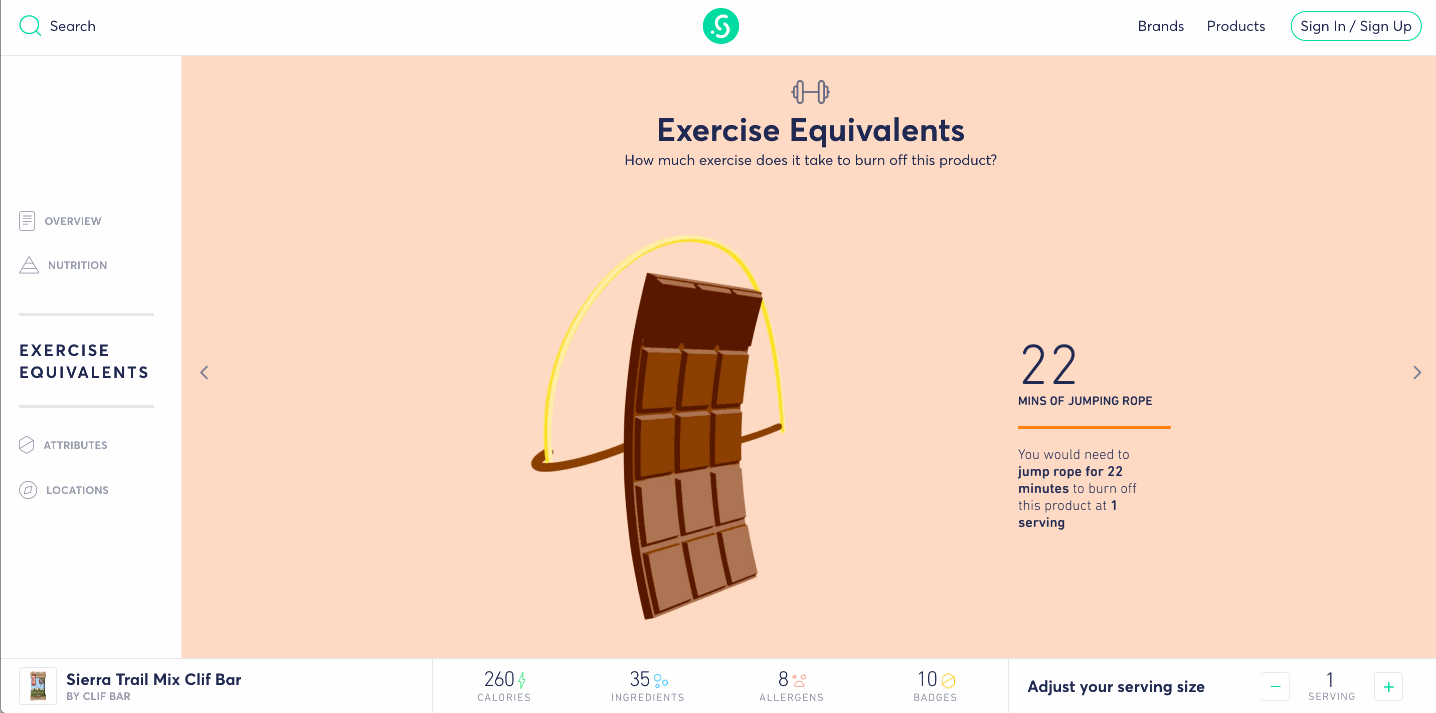A few months ago, the US Food and Drug Administration redesigned the nutrition facts label. The FDA made subtle improvements to the label's legibility, and even published an explainer, to teach people how to read it. These upgrades were well received; but if you ask Sam Slover, there’s still plenty of room for improvement.
Slover is co-founder of the Sage Project, a new online platform that reimagines food data for the Internet age. Slover’s vision isn’t a label; it's an interactive web app. Sage deconstructs more than 20,000 fresh and packaged foods (mostly organic brands from Whole Foods, for now) into interactive, personalized blurbs of information that make the basics of food labels---calories, top nutrients, ingredients, and allergens---easier to digest.
Slover wanted to provide people with more than raw data about the foods they eat. He wanted to communicate what a food's nutritional content actually means in the context of a person's health, activity levels, and fitness goals. “We want to unlock data and give it back to people in ways that are actionable,” he says.
Take the ingredients list, for example. The FDA's label itemizes ingredients in descending order of weight. It seems straightforward enough, but when Slover asked dieticians which aspects of the FDA's food label they found troublesome, they repeatedly pointed to this list. Knowing what items are in your food is different from knowing what those items are and where they originate. That's important information, but there's no room for it on the FDA's label.
Sage solves for this design problem, and others, by deconstructing the traditional food label into bite-sized infographics. Slover and his team assign every item of food in the Sage database a webpage. At the top of each page are the item's five most plentiful nutrients. Scroll down the page and you'll find a granular analysis of the food's nutritional content, divided into nutrients you should seek out and ones you should limit.
Scroll a little further for exercise equivalents. (You would need to run for ten minutes to burn off one serving of these naan chips.) Scroll a little more and you'll find an annotated list of ingredients and allergens. Don't know what niacin is? Just click the little information icon. “If it's a product we haven’t seen before, we classify it and give it a regular person description,” Slover says. Scroll all the way to the bottom of the page to find a map indicating the food's country of origin. If it's produced by a company, the map will also show where that company is based.
If Sage has a drawback, it's that it actually provide too much information. “There are certain people who really like the details, but there are other people who find it overwhelming,” says Angela Lemond, a dietician with the Academy of Nutrition and Dietetics. That said, she commends Sage for preempting information overload with its customization features. You don't need a profile to use Sage, but creating one lets you choose the information that's presented to you, and mold it to your dietary restrictions and health goals. The end result is an interactive experience that feels very personal. "It’s not going to tell you how to put a meal together or how to shop to get breakfast on the table for your kids in 10 minutes," Lemond says, "but it does give you individualized, detailed information about specific foods."
Of course, Sage can do this because it doesn't have to fit on the back of a bag of chips. Not everyone will want (or need) all the information Sage provides; for plenty of people, calorie count might be all they care to know about the food they're eating. But for a more conscientious eater, a tool like Sage is a well-organized, informationally dense mine of information.

